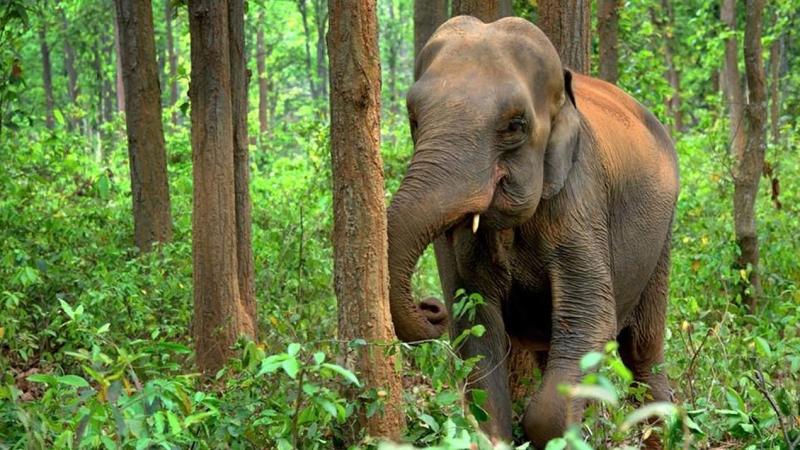
India harbours approximately half of the total population of the endangered wild Asian elephants (Elephas maximus). They need large areas for survival and are considered as “umbrella species” as their conservation also protects other species that occupy that same habitat. However, like many other animals, elephants are also facing the heat of a changing climate, and are a victim of habitat loss. In a recent study, an international team of researchers from India, Spain, Nepal, Myanmar, Italy and Germany has examined how climate change and human activities affect the distribution of the Asian elephants in India and Nepal. The study was published in the journal Diversity and Distributions.
It is well-known that climate change regulates the distributions of species through temperature and the availability of water, or through modifications of their habitats. Changes in land use by human activities, like the conversion of forests into agricultural land or increased urbanisation, amplify the impacts of climate change. To understand the implications of all these pressures on the elephant population, the researchers predicted the shifts in their ranges using models based on the distribution data of the elephants and the future climate projections.
The researchers found that in the future, climatic water balance, followed by changes in temperature and the disturbances caused by humans, would shape the distribution of the jumbos. “Our results suggest that around 41.8% of the habitat available at present, will be lost by the end of this century due to combined effects of climate change and human pressure”, say the researchers. They also predict that due to the intensifying droughts, habitat loss would be more common in human‐dominated areas at lower elevations.
“We anticipate that elephant range would likely shift towards higher elevations in the Himalayas and along a gradient of water availability, that is, low elevation valleys in the mountains”, explain the authors, talking about the predicted change in the distribution of the elephants. They point out that loss of habitat and the shift in their range would also escalate the human-elephant conflicts.
The researchers also studied about core areas of elephant distribution and the connectivity among those. They suggest that the fragmented core areas, located along the foothill forests and floodplains of the Himalaya in the northern part of India and Nepal, could be connected for better management. The findings of the study can help to design appropriate management plans for wildlife conservation and identify critical habitat areas, which need immediate conservation attention.






